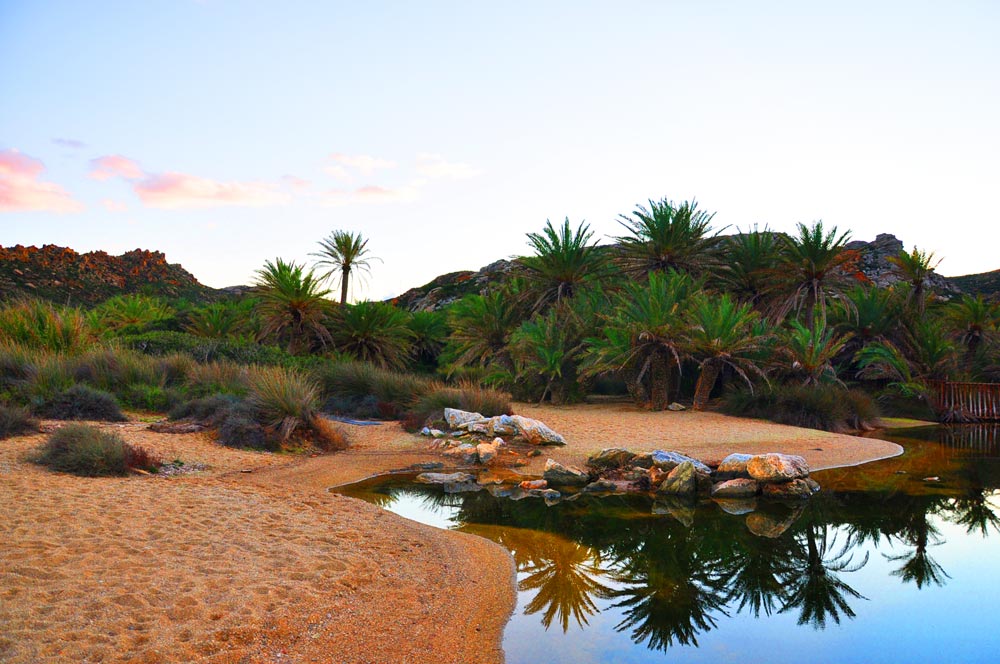
16 Apr Palm Beach Vai
Vai, Greek for “palm,” is a region of east Crete between Cape Sidero and Cape Plaka, just south of the site of ancient Itanus but north of the villages that surround and are part of Palekastro. Vai does not belong to them nor is it part of any civic unit of the local civic division of Greece. It is not itself an official village. The region is somewhat isolated on the isolated northeast peninsula, connecting only to Eparchos odos moni Toplou, the only road between Palaikastro and Toplou Monastery. The entire distance is essentially trackless and deserted, as the name of one of the beaches at Itanos suggests, Eremoupolis, “deserted city”.
Vai is a protected area under the jurisdiction of the national government. It has been defined as different kinds of parkland by different governmental agencies. Vai Palm Forest, or more officially Vai Aesthetic Forest, contains several thousand palm trees in a valley perpendicular to the beach and running down to it. Before being protected, the forest was used as an ad hoc campground by a large transient population frequenting the beach. In the late 20th century, to protect it, the forest was declared a national park and was surrounded by a barbed-wire fence.
Vai beach is popular but crowded. Staying on the beach overnight is not allowed. Some daytime facilities are collected in a building center behind the beach, and there is a parking lot. A few restaurants have taken advantage of the road. Palms extend across the back of the beach. In front of them are rows of quasi-permanent shelters from the sun, which vary from decade to decade: umbrellas at one time, tents at another, thatched roofs at another. Overnight visitors are expected to find lodging and necessities in the villages surrounding Palaikastro to the south, a few minutes away. To the north is the deserted city of Itanos, which, however, has some camping and two beaches. Itanos beach as well as Psili Ammos beach to the south have been clothing optional. North of Eremoupolis beach, the shoreline becomes rugged and cliff-lined, and the country desert.
The next most general park system imposed on Vai is the Natura 2000 protected areas mandated by the European Union in conjunction with the government of Greece. The abandoned land on the Itanos peninsula of Cape Sidero, from which the national park had been created by eminent domain, is a refugium (biological “refuge”) for indigenous plant and animal species, many rare or endangered, as well as a station of the migration routes for a large number of migratory birds. The ecology needs to be protected.
Coincidentally the entire area had come under archaeological scrutiny by a collaboration of archaeological organizations, such as the French School at Athens, which had been conducting excavations on ancient Itanus, just to the north of Vai, and had also discovered the Minoan villa. The resulting Itanos Archaeological Survey conducted during the period 1994-2005 had located roughly 100-200 sites covering occupation of the cape since the Neolithic. The government therefore declared two new Natura 2000 protected areas in northeast Crete, GR4320006 authorized under the Habitats Directive for protection of the species, and GR4320009 for protecting sites of community importance.
